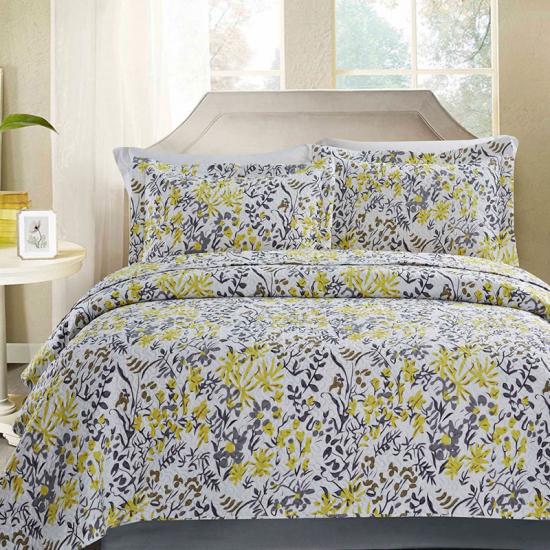The resistance of an ultrasonic quilt to fading when washed and exposed to sunlight depends on several factors, including the quality of the dyes used, the dyeing process, and any treatments applied to the fabric. Generally, polyester microfiber fabrics are known for their good color fastness properties, but the ultrasonic quilting process can also play a role. Here is a detailed explanation:
Color Fastness to Washing
Testing Methods:
The quilt's color fastness to washing is typically tested using standard methods like ISO 105-C06 or AATCC 61, which simulate multiple washing cycles to assess color retention.
These tests involve washing the fabric with different detergents and at various temperatures to evaluate how well the color withstands repeated laundering.
Results:
Polyester microfiber generally exhibits high resistance to fading from washing due to the strong chemical bonds between the dye and the synthetic fibers.
The ultrasonic quilting process, which bonds the fabric without using thread, does not typically affect the color fastness negatively, as it does not involve high temperatures or chemicals that could degrade the dye.

Color Fastness to Sunlight
Testing Methods:
The quilt's resistance to fading under sunlight is measured using tests such as ISO 105-B02 or AATCC 16, which expose the fabric to controlled sunlight or artificial light sources for extended periods.
These tests simulate prolonged exposure to natural sunlight, measuring how well the color withstands UV radiation.
Results:
Polyester microfiber fabrics generally have good UV resistance, but prolonged exposure to intense sunlight can still cause some fading over time.
Any treatments applied to the fabric, such as UV absorbers or color fixatives, can enhance its resistance to fading.
Overall Performance
Washing: The ultrasonic quilt is highly resistant to fading from washing due to the inherent properties of polyester microfiber and the stable dyeing process.
Sunlight: The quilt shows good resistance to fading under sunlight, but some fading may occur with extended and intense UV exposure. Treatments to improve UV resistance can mitigate this effect.
The ultrasonic quilt made from polyester microfiber is generally resistant to fading when washed and exposed to sunlight. However, the degree of resistance can vary based on the quality of the dyes, the dyeing process, and any additional treatments applied to the fabric. Regular care and following recommended washing instructions will help maintain the quilt's color vibrancy over time.















.jpg)
.jpg)
.jpg)
.jpg)
.jpg)
.jpg)
.jpg)

.jpg)